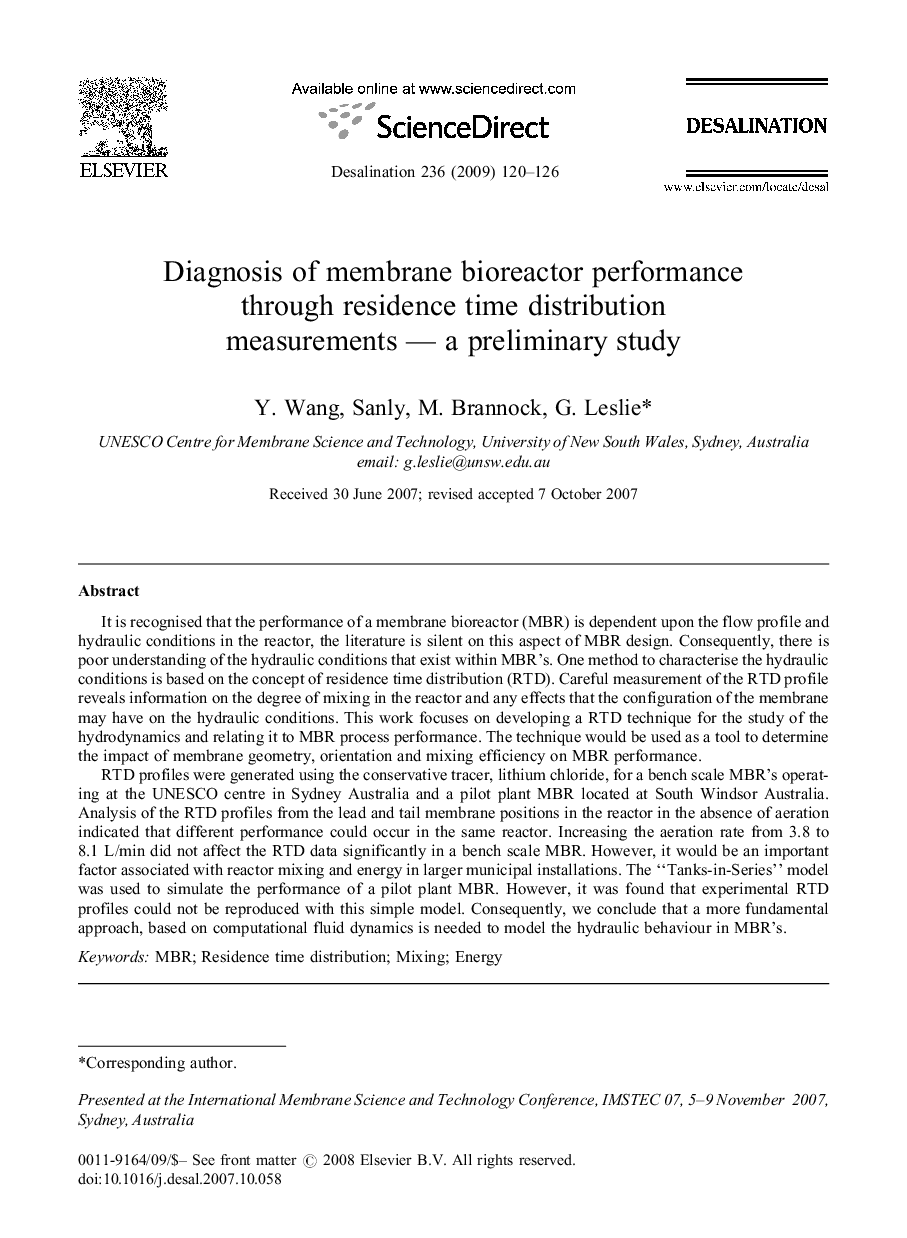| Article ID | Journal | Published Year | Pages | File Type |
|---|---|---|---|---|
| 627029 | Desalination | 2009 | 7 Pages |
It is recognised that the performance of a membrane bioreactor (MBR) is dependent upon the flow profile and hydraulic conditions in the reactor, the literature is silent on this aspect of MBR design. Consequently, there is poor understanding of the hydraulic conditions that exist within MBR's. One method to characterise the hydraulic conditions is based on the concept of residence time distribution (RTD). Careful measurement of the RTD profile reveals information on the degree of mixing in the reactor and any effects that the configuration of the membrane may have on the hydraulic conditions. This work focuses on developing a RTD technique for the study of the hydrodynamics and relating it to MBR process performance. The technique would be used as a tool to determine the impact of membrane geometry, orientation and mixing efficiency on MBR performance.RTD profiles were generated using the conservative tracer, lithium chloride, for a bench scale MBR's operating at the UNESCO centre in Sydney Australia and a pilot plant MBR located at South Windsor Australia. Analysis of the RTD profiles from the lead and tail membrane positions in the reactor in the absence of aeration indicated that different performance could occur in the same reactor. Increasing the aeration rate from 3.8 to 8.1 L/min did not affect the RTD data significantly in a bench scale MBR. However, it would be an important factor associated with reactor mixing and energy in larger municipal installations. The ‘‘Tanks-in-Series’’ model was used to simulate the performance of a pilot plant MBR. However, it was found that experimental RTD profiles could not be reproduced with this simple model. Consequently, we conclude that a more fundamental approach, based on computational fluid dynamics is needed to model the hydraulic behaviour in MBR's.
